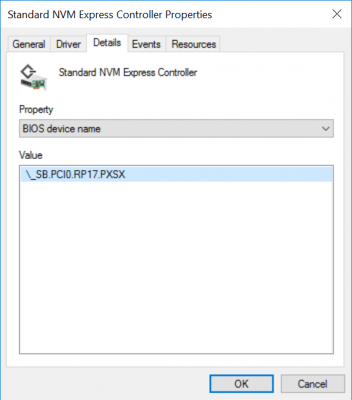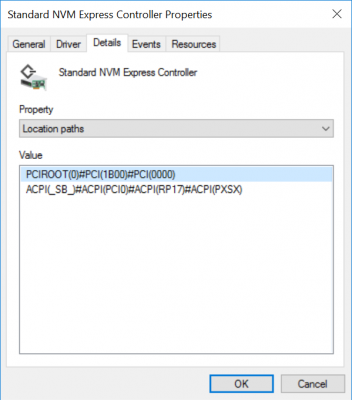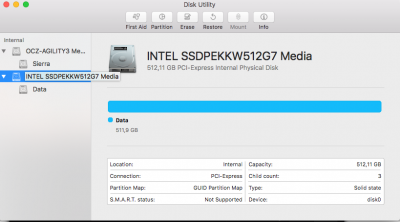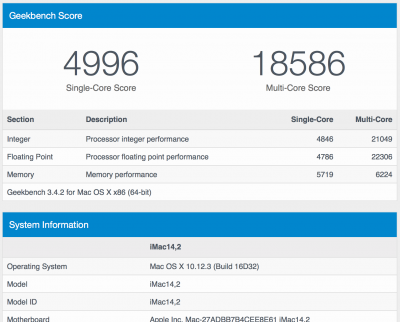RehabMan
Moderator
- Joined
- May 2, 2012
- Messages
- 181,011
- Motherboard
- Intel DH67BL
- CPU
- i7-2600K
- Graphics
- HD 3000
- Mac
- Mobile Phone
Figuring out where Intel NVMe Is hanging out in the device tree:
View attachment 237289
So I deduct it to be like this :
/_SB/PCI0@0/RP09@1d0000/PXSX@0
And therefore my SSDT-NVMe-Pcc.aml looks like this, compile to version 6.1 with MaciASL.
// Inject bogus class-code for NVMe SSD to prevent IONVMeFamily.kext from loading
DefinitionBlock("", "SSDT", 2, "hack", "NVMe-Pcc", 0)
{
External(_SB.PCI0.RP9.PXSX, DeviceObj)
Method(_SB.PCI0.RP9.PXSX._DSM, 4)
{
If (!Arg2) { Return (Buffer() { 0x03 } ) }
Return(Package()
{
"class-code", Buffer() { 0xff, 0x08, 0x01, 0x00 },
"built-in", Buffer() { 0 },
})
}
}
//EOF
The (first) mistake is obvious: RP9 is not the same as RP09.





